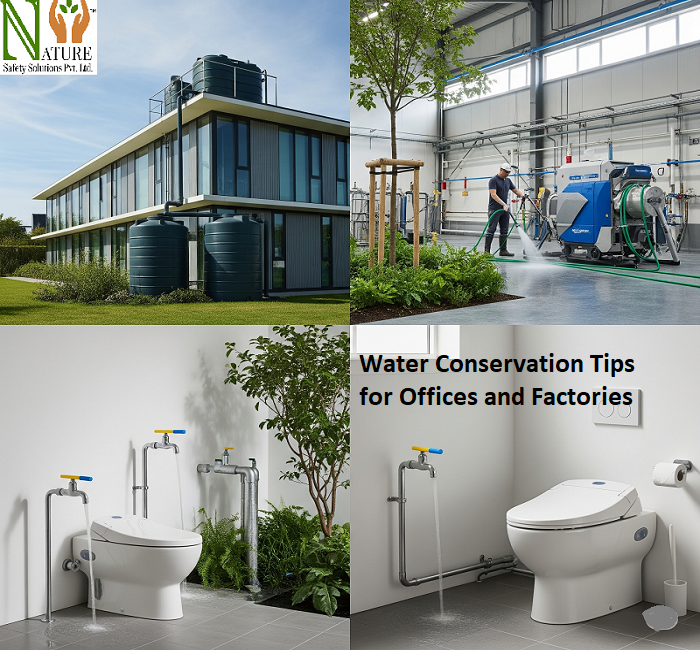Water is a valuable and finite resource that is essential for business operations, whether in a corporate office or an industrial factory. As global water scarcity becomes a growing concern, companies must take active steps to reduce water consumption.
Not only does this contribute to environmental sustainability, but it also helps in lowering costs, meeting regulatory requirements, and enhancing a company’s green reputation.
This guide offers practical water conservation tips tailored for both offices and factories.

Why Water Conservation Matters
Water conservation is more than just an environmental initiative—it’s a smart business decision. It helps reduce pressure on local water supplies and ecosystems, contributing to long-term environmental sustainability.
Additionally, it brings significant cost savings by lowering water and energy bills. Companies that practice water efficiency are also more likely to stay compliant with regulations, avoiding fines or restrictions.
Lastly, it boosts a company’s corporate reputation, showing clients and the community that the organization values sustainability and resource stewardship.
Water Conservation in Office Environments
Even though offices may not use large volumes of water compared to factories, they still have plenty of opportunities to reduce waste.
1. Fix Leaks Immediately
A single leaking tap or toilet can waste thousands of liters annually. Conduct routine checks and repair any leaks promptly.
2. Install Water-Saving Fixtures
Replace standard taps, toilets, and urinals with low-flow or dual-flush models to reduce water consumption without affecting functionality.
3. Educate Staff on Water Efficiency
Promote simple habits like turning off taps, reporting leaks, and using water mindfully. Display awareness posters in restrooms and kitchens.
4. Optimize Pantry and Kitchen Usage
Use water-efficient dishwashers and avoid running water when washing dishes. Encourage employees to use reusable cups and bottles.
5. Manage Outdoor Water Use
If your office has landscaping, choose native or drought-resistant plants. Install drip irrigation systems and water only during cooler hours to reduce evaporation.
6. Sustainable Cleaning Practices
Hire cleaning services that use water-efficient methods, such as microfiber mops and non-toxic, low-water cleaning products.
Water Conservation in Factories and Industrial Settings
Factories typically consume more water due to production, cooling, and cleaning processes. However, they also have the greatest potential for savings.
1. Conduct a Water Audit
Start with a full audit of your water usage to identify where water is used most and where savings can be made.
2. Reuse and Recycle Water
Implement systems to treat and reuse process water. Recycling rinse water or reusing cooling water can significantly reduce consumption.
3. Upgrade Equipment
Modern machines are often designed with efficiency in mind. Replace outdated equipment with models that use less water per operation.
4. Use Closed-Loop Cooling Systems
Instead of single-pass systems that discharge water after one use, switch to closed-loop systems that continuously reuse cooling water.
5. Monitor Water Usage
Install water meters in different sections of the plant to detect abnormal usage patterns, spot leaks, and identify high-consumption areas.
6. Employee Training and Involvement
Train your workforce on water-saving techniques and encourage them to participate in sustainability programs. Small behavioral changes can lead to big results.
7. Choose for Dry or Steam Cleaning
Reduce water used in cleaning by switching to dry cleaning or steam-based alternatives wherever possible, especially for equipment and floors.
Creating a Water-Conscious Workplace Culture
For any conservation strategy to succeed, the mindset of the people involved is key. Building a water-conscious culture means:
Leading by example: Management should actively support and promote water-saving measures.
Employee engagement: Create a “green team” or incentive program that rewards ideas and participation in conservation efforts.
Regular communication: Use emails, digital boards, and workshops to keep water-saving goals top of mind.
Tracking progress: Monitor water usage monthly and share progress with staff to encourage collective effort.
Also read:-

Pingback: Stay Safe at Work: 10 Daily Manufacturing Safety Tips -